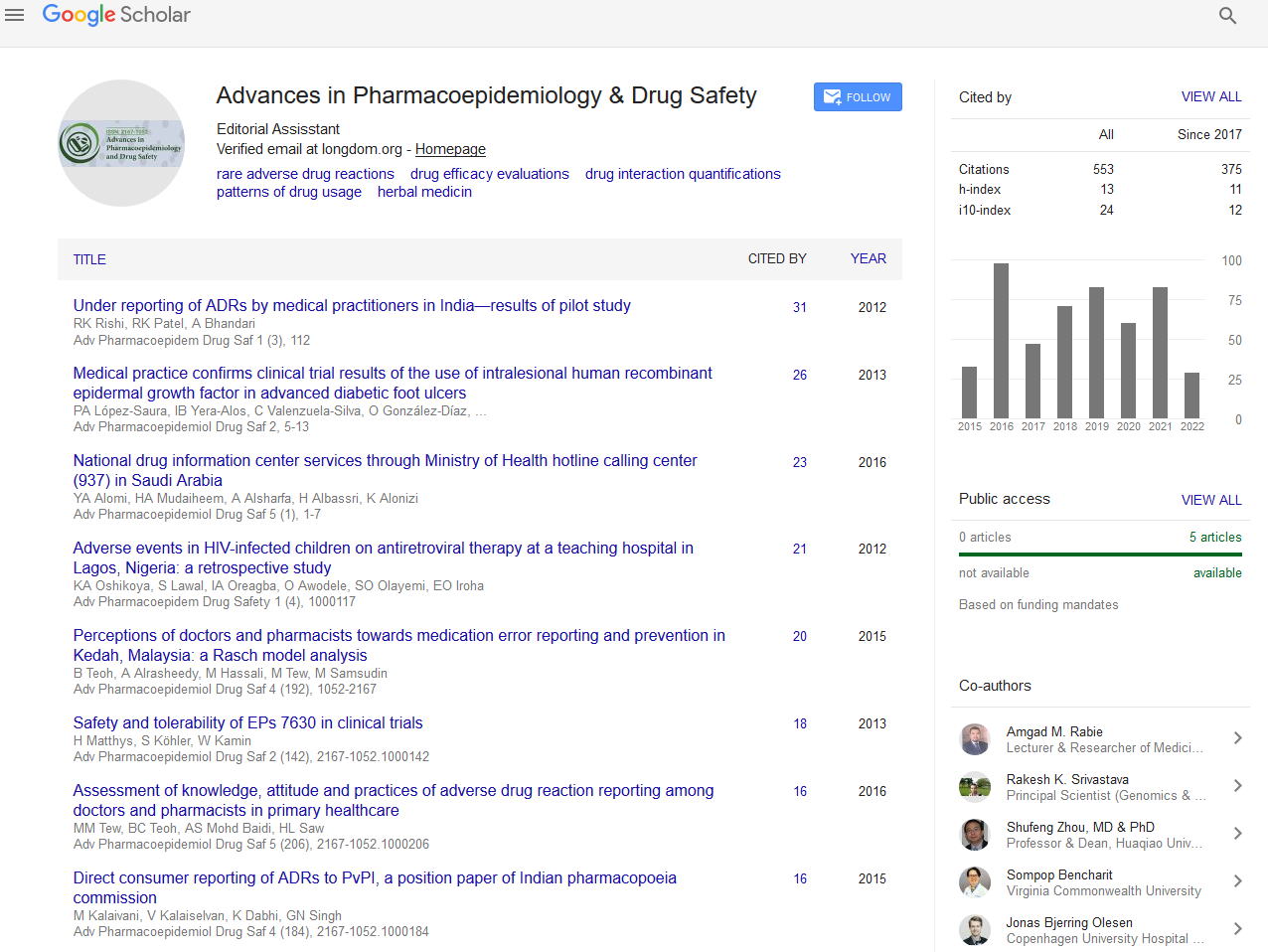Indexed In
- Open J Gate
- Genamics JournalSeek
- Academic Keys
- JournalTOCs
- RefSeek
- Hamdard University
- EBSCO A-Z
- SWB online catalog
- Publons
- Geneva Foundation for Medical Education and Research
- Euro Pub
- Google Scholar
Useful Links
Share This Page
Journal Flyer

Open Access Journals
- Agri and Aquaculture
- Biochemistry
- Bioinformatics & Systems Biology
- Business & Management
- Chemistry
- Clinical Sciences
- Engineering
- Food & Nutrition
- General Science
- Genetics & Molecular Biology
- Immunology & Microbiology
- Medical Sciences
- Neuroscience & Psychology
- Nursing & Health Care
- Pharmaceutical Sciences
Abstract
Selective Serotonin Reuptake Inhibitors, are They All Equal? A Pharmacoepidemiological Study
Péron E, Hardouin JB, Sébille V, Feuillet F, Wainstein L, Chaslerie A, Pivette J, Jolliet P and Victorri-Vigneau C
Introduction: According to the French health authorities’ guidelines relative to depression and anxiety disorder treatments, six Selective Serotonin Reuptake Inhibitors are available for prescription as a first-line of treatment. The guidelines suggest equivalence between these treatment options, but studies diverge regarding efficacy and safety profiles. Moreover, conditions in clinical trials are strictly controlled and do not truly reflect real life utilization. The objective of this study was to evaluate differences in efficacy and/or safety between these six selective serotonin reuptake inhibitors in real conditions of use. Methods: Efficacy and safety were evaluated using a regional database of the French national health insurance. Patients who received a selective serotonin reuptake inhibitor for a new depressive disorder and who were compliant to the treatment for a period of at least 6 months were included. Events indicative of a lack of efficacy and/or safety during the 12-month follow-up period were identified in the database (i.e., a dose increase, a switch to another antidepressant drug or an association with another antidepressant drug). A Cox model was used to compare the frequency and the delay to onset of each type of indicative event for each selective serotonin reuptake inhibitor. Results: Out of 3542 patients included, 1081 (30.5%) experienced an indicative event. The Cox model showed differences in terms of efficacy and safety. Patients treated with paroxetine, sertraline or citalopram as a first antidepressant were more likely to present a therapeutic failure than those treated by escitalopram or fluoxetine. Conclusion: A Cox model identified differences between selective serotonin reuptake inhibitors in terms of efficacy and/or safety profile. Our study positioned Escitalopram as the most efficient and/or safe treatment option. This study strategy can viably be used to evaluate the real life usage and effects of other drugs, an essential part of post approval evaluation.


